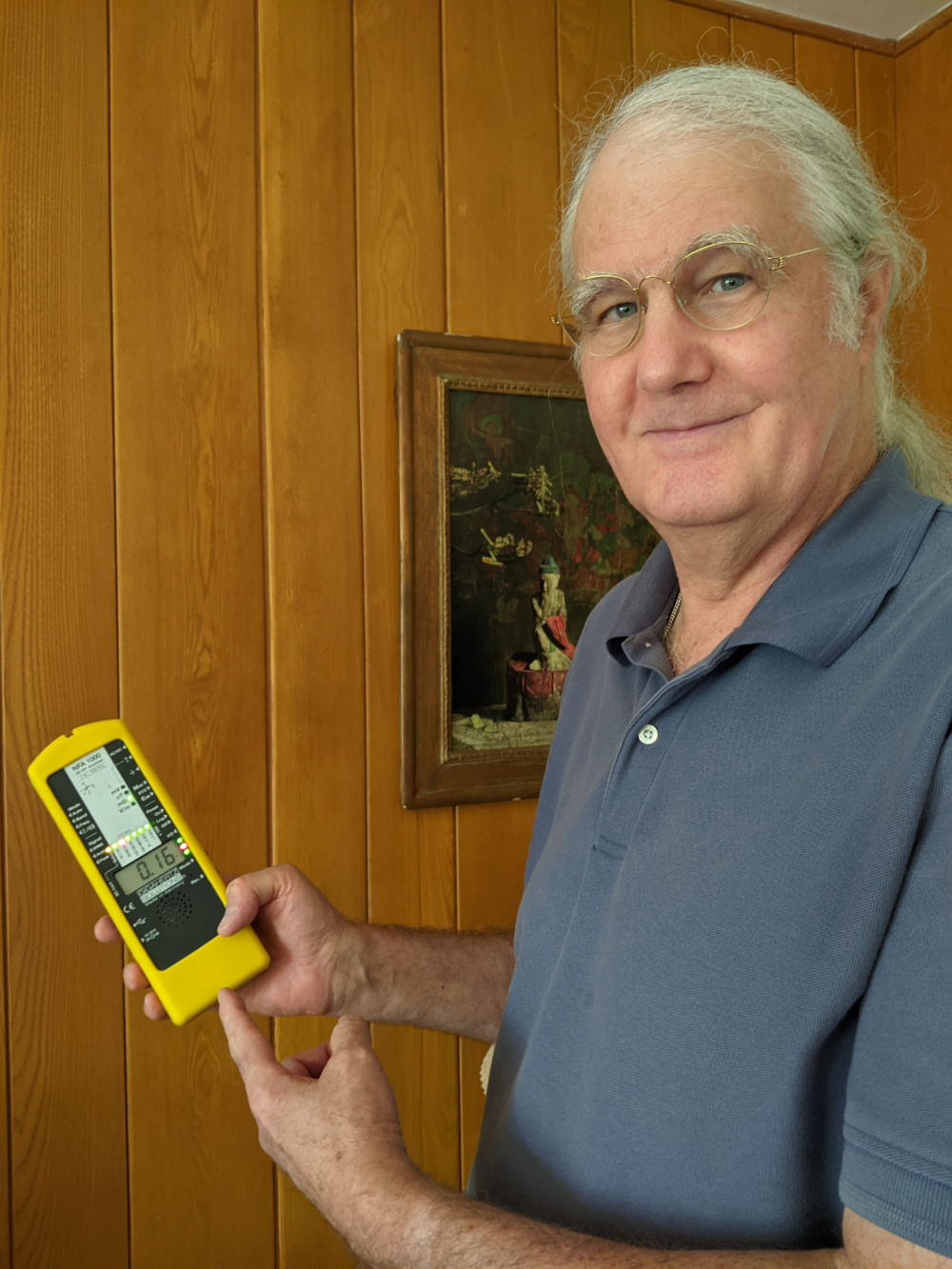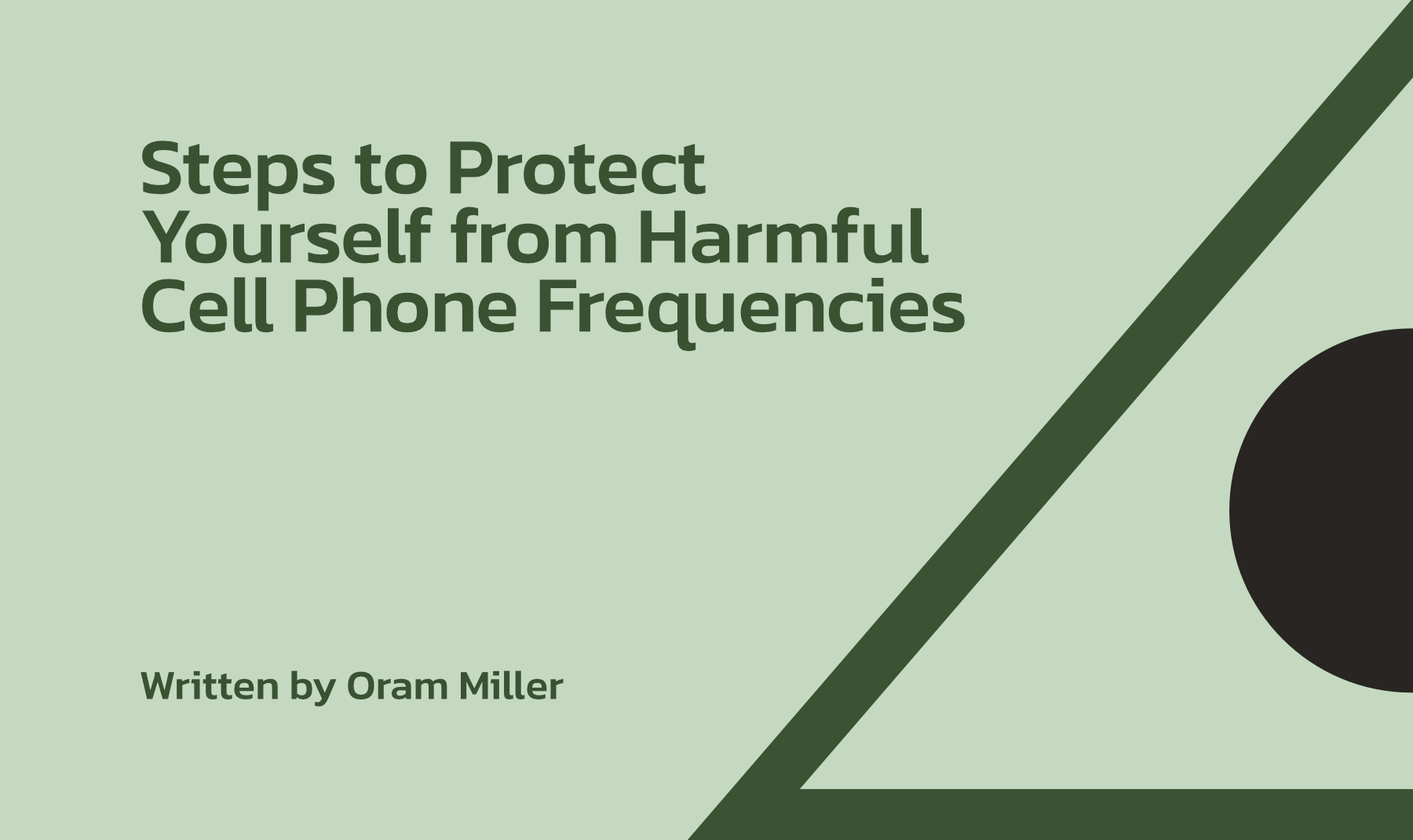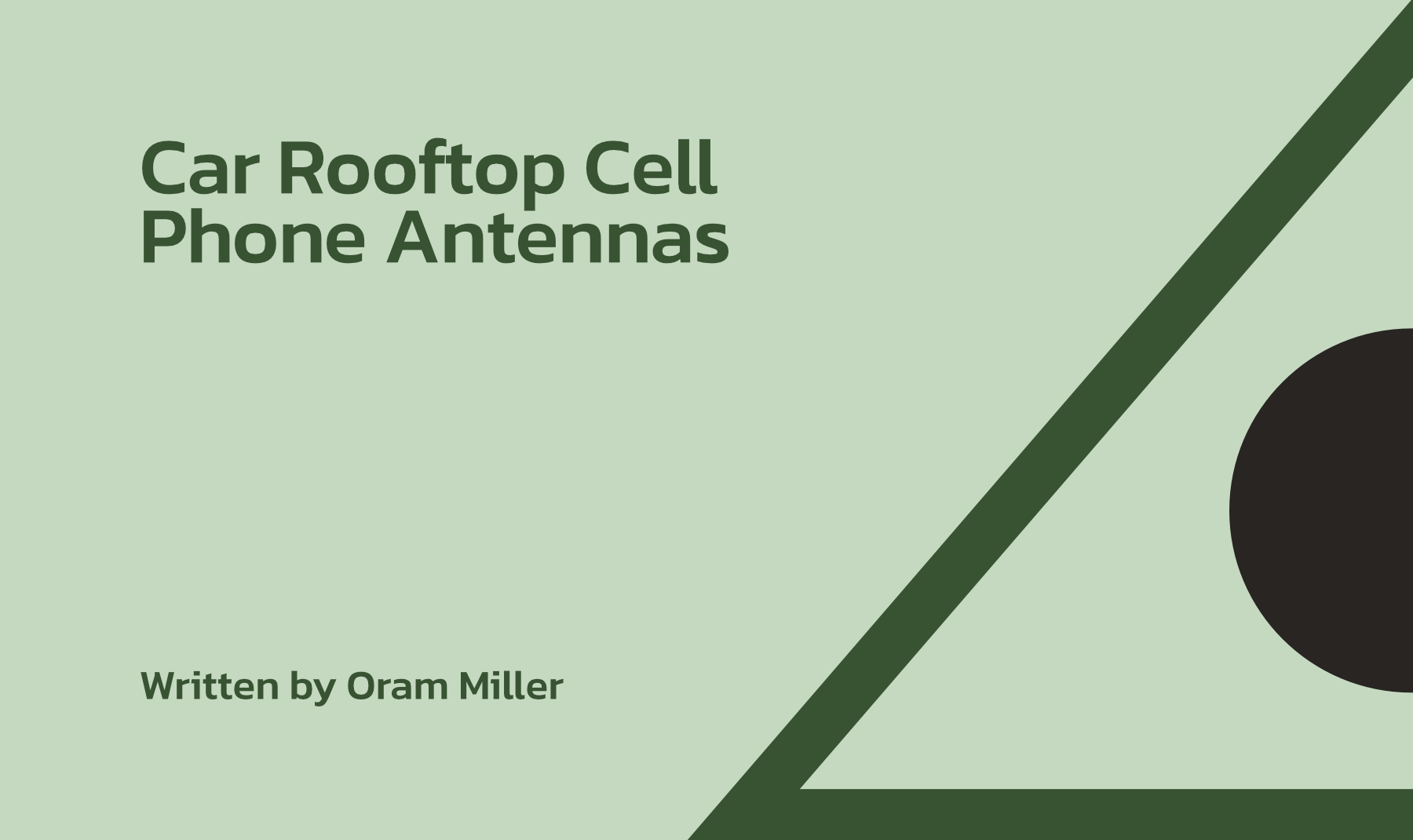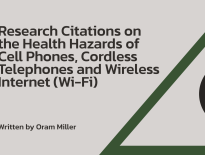Introduction
The list of steps to protect yourself is presented below followed by a discussion of related topics, but first, I present some introductory remarks.
I should start off by saying there is no such thing as a “safe” cell phone. It is simply a matter of how much exposure are you willing, or able, to tolerate and how proactive you want to be in protecting yourself.
All cell phones generate potentially harmful frequencies, no matter how you use them. It is a question of how long you use the phone, how often, and how far it is held from your head and body.
At the end of the day, you have to ask yourself, “How many cigarettes did I smoke today? Two? A half a pack?” Sooner or later, cell phones will affect your health. It is just a matter of how well your body’s cells can repair themselves from the cellular damage they cause day after day and how much damage you can tolerate over your lifetime before you become symptomatic.
How many of you smoke cigarettes today? Probably almost none. We are at the same point we were as a society with cigarettes forty years ago. Now we know better about the effects of smoking tobacco, including second-hand and now, third-hand smoke. The number of smokers in this country is now quite low and all public places in the US are smoke-free. Think of cell phones in the same way and you will be well ahead of the curve.
To learn what the rest of the world already knows and to see strategies to protect yourself, look at the slides I present in my power point lecture on cell phones and EMFs by clicking here.
You can also review the abundant research, almost all of which comes from Europe, proving that these devices do cause biological effects, no matter how handy they are. Click here to learn about “Cell Phone and Radio Frequency Risks.”
For those of you who believe your are fully protected from harm by the EMF-reducing chip or diode you bought and placed on your cell phone, I recommend you read my Position Paper on Cell Phone Chips, Pendants and Home Harmonizers. I am honestly one of the few members of my profession who believes they do some good, but by no means do I believe they should be used as the sole means of protection while you continue to hold the phone against your head, no matter what they say.
The main problem we run into is our meters and instruments do not measure any reduction in EMF emmissions when these chips are in place. Although their makers say, “That’s not how they work,” my response is, “Do you want to risk being wrong ten years from now?” I base this opinion on the work of one of the orignial proponents of EMF-reducing chips and head of a large-scale research study on the biological effects of cell phone use, Dr. George Carlo. He reversed his support for these chips completely when he discovered that users became worse after 9-18 months. You can read his Medical Alert and other information in my Position Paper and below. I also have more extensive comments on this subject below on this page.
Instead, we recommend that you first implement the steps recommended below to be fully safe. If you want to add a diode or chip, use it as the third or fourth step in your protection protocol. Why try to neutralize a very powerful radiation field, with possibly only partial success, when you can take steps to protect yourself more fully by reducing your exposure to the transmitter in the first place?
To sum it up, the safest way to use a cell phone as far as we are concerned is to use it as little as possible. Our two guiding principles are:
- Reduce use
- Increase distance
Keep these two principles in mind as you look over the recommendations below.
And here’s a third point: Give yourself the freedom and permission to be different, to buck the trend and do something other than what all your friends are doing, and be ready to explain why.
I also suggest you don’t try to convince anyone else to do the same as you do, especially if they are your own teenagers. No adult or teenager likes to be told what to do, no matter how much they know you love them. In my experience with numerous clients, you will have better luck just explaining the changes you made for yourself. Then if and when they are ready, they will look into the matter for themselves and consider adopting these changes because of your example.
List of Steps to Protect Yourself from Cell Phone Frequencies
With all that in mind, I present below my list of steps to protect you from cell phone frequencies, from least to safest.
1) Continue to use your cell phone right against your head as you have been doing without implementing any of the recommendations below. This is really not a good idea in light of all the evidence that is available today, especially from Europe (see here).
2) Use the speaker phone and hold the cell phone away from your head at arm’s length. This is a reasonable solution for most asymptomatic (non-EMF-sensitive) people. This is not an option when you need privacy for your call, in which case you will end up putting the phone right next to your head part of the time, close enough to cause long-term harm. Because that will happen more often than you think, I would not count on this option to help you much in the long run, but it’s better than holding the phone right against your head.
3) Text more. This likewise keeps the phone away from your head and body and actually reduces radio frequency exposure compared to using the speakerphone. This is because the phone only sends out a pulsed, digital frequency when you hit “send,” rather than almost continuously when you are on speakerphone. There will also be bursts of radio frequency as your phone synchs up with the tower for other functions (incoming texts and other messages, email, software updates). This option is also better than holding the phone right next to your head.
4) Use the earphone provided by your cell phone manufacturer and hold the phone at arm’s length when you make a call. This is also better than putting the phone next to your head, but is not the best solution because most earphone cords can carry radio frequencies (RF) up the cord and concentrate them at your head.
5) Use the earphone provided by your cell phone manufacturer and install two ferrite snap beads on the cord. This is better than using a wired earphone by itself. Purchase the snap beads from Less EMF. In California, you can purchase them from John Black in Costa Mesa (949-891-7369 or 949-261-7352 cell), Robert Brandolino, also in Costa Mesa (949-235-0561), or Sue Long in Tustin (949-387-2084). Place one at the bottom of the cord where it plugs into the phone and the other about 3/4 of the way up (the earphones from Robert have a different configuration). This blocks radiation as it comes out of the phone. It also blocks RF radiation picked up by the cord through the air from your own cell phone antenna as well as frequencies transmitted by other cell phones and cell towers nearby.
Robert Brandolino in Costa Mesa (949-235-0561) has wired earphones that have been tested by an engineer and certified to be 99% EMF-free at the earbud, and 99.9% EMF-free if you put a ferrite bead on the cord.
6) Purchase an air tube earphone and hold the phone away from your body. Don’t keep the phone in a pocket when you are on the call. You can purchase air tube earphones from Less EMF; 888-537-7363.
In California, you can purchase them from:
- John Black in Costa Mesa (949-261-7352),
- Robert Brandolino, also in Costa Mesa (949-235-0561), or
- Sue Long in Tustin (949-387-2084)
Once you have an air tube earphone, be sure to install two ferrite snap beads onto the cord (again, Robert’s have a different arrangement). This is the least harmful option. The plastic air tube in the six inches closest to the earbud keeps all frequencies from your head, but you can still have frequencies travel up the cord right out of the cellphone and from cell towers and other cell phones through the air, which then radiate off the cord as it drapes against your body. That is why the snap beads are still needed.
Specify the type of phone you use so that LessEMF and the folks in California who sell the earphones can provide the correct plug at the end of the cord to plug into your cell phone.
If you use the earphone provided by your cell phone manufacturer instead of an airtube ear phone, you must use two snap beads to block the frequencies that will inevitably come all the way up the cord to the side of your head.
7) Avoid using your cell phone altogether except for a few moments at a time, and only a few times per week. This is actually the safest option.
To accomplish this easily, you should:
- Keep your home telephone landline with the phone company or with the cable company
- Use a corded telephone rather than a cordless telephone on your landline (you can still purchase these at Radio Shack, Frye’s, Staples or Office Depot)
- When you need to make outgoing calls at home, use your corded landline telephone, not your cell phone
- When calls come in to your cell phone while at home, you can forward those calls to your home telephone number. Be sure to reverse that feature when you leave home
- You can also do as I do when calls come in on my business line (a cell phone) when I am home. I ask the client if I can call them back from my landline and I verify that the number they are calling from that appears on my caller ID is correct. I then hang up the cell phone and call them back from my landline corded telephone. That way I have no radio frequencies near me, I don’t use up cell minutes (though now my own plan has unlimited minutes), and the conversation is always much clearer because I don’t have good cell reception where I live in the first place.
8) When in the car, use a roof-mounted external antenna, available from WPSAntennas. Make sure your cell phone has a jack for an external antenna. If you have one, the jack will be located on the back of the phone near the base of the antenna, under the back cover. Be aware that newer cell phones usually do not have these jacks. You may need to purchase a refurbished model. See below for a much more detailed explanation of how to use cell phones safely inside cars. To read a separate article on cell phone use in cars, click here.
9) We do not recommend the use of a Bluetooth headset because you are still exposing the cells of your head and brain to so-called “low-frequency information-carrying radio waves,” which are the most harmful frequencies emitted by wireless devices. While the power output of the carrier wave transmitted by a Bluetooth is only 1/50th the strength of the carrier wave transmitted by a cell phone, the Bluetooth still transmits potentially harmful low-frequency information-carrying radio waves.
Low-frequency waves (16 and 219-230 cycles per second, or Hertz (Hz)) actually carry the electrical impulses created when you speak into your phone, but those frequencies don’t carry very far from the transmitter. When wireless communication technologies were developed by the Department of Defense forty years ago, they had to piggy-back these slower frequencies onto much faster carrier waves up at the high end of the radio frequency spectrum in order for them to transmit for miles. These higher frequencies are in the microwave range at billions of cycles per second, or Giga Hertz (GHz).
This is the range assigned to wireless companies by the FCC for cell phones, wireless Internet routers and cordless telephones. These are unregulated frequencies, meaning a consumer does not need an FCC licence to operate these radio transmitters. You will notice the numbers 2.4 GHz (2.4 billion cycles per second) or 5.8 GHz (5.8 billion cycles per second) on your cordless telephone, or now DECT 6.0 (which is actually 1.9 GHz). That refers to the carrier frequency, but the low-frequency radio wave that actually transmits the voice is superimposed onto the much faster carrier frequency.
Cell phone companies are assigned carrier wave frequencies of 800, 900, 1,800 and 1,900 MHz (0.8, 0.9, 1.8 and 1.9 GHz) in America, so they are all in roughly the same range, and Wi-Fi routers also broadcast at 2.4 and 5.8 GigaHertz. So does your microwave oven! It turns out that 2.4 GHz is the frequency that heats water (which our bodies are mostly made up of) but in a microwave oven, the walls and window of the oven keep those frequencies inside to heat up your food (which has health implications of its own, but that is another topic).
Regarding health effects from these radio frequencies, the carrier wave of wireless devices fortunately has a Specific Abosrption Rate (SAR), which is a safe exposure level below which you can have the cell phone near you without significant biological harm. Yet that only pertains to the so-called “thermal effects,” or the effects of heat on the body, including damage to proteins in the cell. The FCC mandates that all cell phone manufacturers keep the SAR of the phones they sell below a generally accepted safe level of 1.6 watts of energy exposure per kilogram of body weight. Obviously the lower the number the better, but this is not the parameter we are concerned about. Nevertheless you can find what the SAR of your cell phone is by looking in the phone’s user manual (often hidden in fine print near the back) or on the manufacturer’s website, or by clicking here.
The health effects of low-frequency information-carrying radio waves, on the other hand, are much more insidious and they are under-reported. While they do not cause heating effects and are therefore called “athermic” or “non-thermal” waves, studies show that they do cause long-term biological damage to cells in the brain and head through other mechanisms. Adverse effects include opening of the blood/brain barrier allowing toxins and pathogens to reach the brain, DNA damage and non-repair, changes in brainwaves, and formation of cancer-causing particles, known as micronuclei, in the nucleus of the cell.
The problem is, there is no safe level for exposure to these low frequencies. They cause biological harm even down to almost zero power output of the wireless transmitter, which in this case is your cell phone or Bluetooth device right next to your head.
To make matters worse, the harmful effects of these waves are cumulative. It is these low-frequency information-carrying radio waves that concern researchers the most, particularly when you consider that children today will have a lifetime of exposure. Scientists in Europe estimate that a child growing up in a home with nothing but cell phones as the only phone in the house stands a good chance of developing full-blown Alzheimer’s Disease in their 40s, not when they are 70 or 80 years old. That represents more than 25% of homes in the US and upwards of 90% of all homes in the third world. Health officials are anticipating a massive worldwide public health crisis in 20 years time in which large swaths of the population suffer from cancer, Alzheimer’s and other forms of cognitive impairment.
Low frequencies are emmitted by all wireless devices in use today, and it is for that reason that we recommend a signficant curtailment of their use. Please read Committee Resolution 1815 passed by the Parliamentary Assembly of the 47-member Council of Europe on May 27, 2011. To view the resolution, click here. To see Oram’s commentary on the resolution, click here.
Now that we have reviewed the science, you can see why we also do not recommend using a Bluetooth device, because no matter how low below the SAR the carrier wave output of the device may be, the harmful low-frequency radio waves are still there.
This also goes for use of a Bluetooth in the car (see below in the section, “Cell Phone Use in Cars” for alternatives)
Using Cell Phones for Email and Other Internet Uses, and the Use of Wireless Pads (iPad, etc.)
More and more of us are using our cell phones as mobile computers, allowing us to access email and the web away from home. We are also using various wireless pads, which essentially function as thinner, more portable laptops.
The problem is that these devices only access email and the web through wireless connections either directly to a cell tower or to a nearby Wi-Fi network. You can connect to the Internet from your laptop or desktop computer using only a hardwired Ethernet connection, as discussed on the page, “Safer Use of Computers”.
These portable pads and smart cell phones, on the other hand, do not have an Ethernet jack. A smart phone and pad can connect to a computer through a cable to the computer’s USB port, allowing you to transfer files back and forth and recharge the device, but you cannot access the web on the computer through the pad or smart phone.
This is a design decision by the manufacturers, particularly of the pads, that locks them into a wireless-only connect mode to the Internet, unfortunately exposing users to harmful radio frequencies. EMF-sensitive individuals are able to stay hardwired with a laptop or desktop computer, but that is not possible with the pads or smart phones if you want to connect to the net.
My only suggestion is to minimize your use of an iPad or smart phone when away from home and use your hardwired computer when at home to access email and the net. You can always take a laptop with you when away from home and bring an Ethernet cable to plug into a router at your friend’s home or into the Ethernet data port in most hotel rooms. You can also plug into the Ethernet cable at Fed Ex Office (the old Kinkos).
Safer Cell Phone Use in Cars
Using your cell phone in the car presents many health and safety challenges. Using a cell phone without a hands-free set-up is illegal in many states, including California. From our standpoint, there is the added problem that the signal being broadcast from your phone to the cell tower outside is not fully penetrating through all the steel that surrounds you, and it bounces back inside. This coalesces into a potentially harmful “sweet spot” of increased radio frequency exposure. It can also trigger the cell tower to send a command to the cell phone telling it to boost its power output to push the transmission through the steel. This also pushes more radio frequencies into your brain as you hold the phone to your head.
If you must be on the cell phone while driving, the answer is to transmit from a roof-top antenna that is connected to your phone by a cord, not from the antenna inside the phone, and not from a Blue Tooth. Using a Blue Tooth adds more wireless transmitters inside the car, and the final transmitter to the cell tower is still your cell phone, likely sitting on the seat next to you trying to broadcast through all that steel.
Instead, you must first purchase a cell phone with an external antenna jack. If you want a smart cell phone, you can try to purchase an LG Ally (sold by Verizon and which unfortunately is being discontinued) or other model that has an external antenna jack on the back (sometimes found under the back cover). There are also several flip phones available with external antenna jacks. Sometimes the sales reps are not even aware that the phone has one. Ask to see what the truckers use.
Once you have found a cell phone with an external antenna jack, locate the make and model number. Then order a car rooftop external antenna from Alternative Wireless. Probably the best antenna for most people’s use is the Wilson 3db Dual Band Mag Mount Antenna FME F for $29.95. You can reach them at 888-399-4932.
You will need to tell them the model number of your cell phone. That way they can send you a rooftop antenna that includes a shorter cord with the appropriate plug that goes into the jack on the back of your phone (which shuts off the onboard antenna inside the phone). The other end of this short cord is screwed into the end of a longer wire that is attached to the antenna on the roof.
Place the antenna above your head on the metal roof of your car. The magnet in the base of the antenna will keep it from moving as you drive. There is a “dead spot” right under the antenna and the metal roof of your car acts as a shield to protect you as you sit inside from the frequencies that are broadcast from the antenna. If you have a sunroof, move the antenna back so that the metal roof as it meets the back edge of the sunroof casts an imaginary shadow along a line from the top of the antenna to a point above the top of your head as you sit inside the car. The idea is to make sure that the metal roof shields your head completely from frequencies broadcast from the rooftop antenna, because the glass of a sun or moonroof will let the frequencies pass right into the car, and you don’t want your head to be in that path.
Then run the wire in through the back door on the driver’s side. Run the cord around the seat belt where it is attached to the door post and then down and behind the driver’s seat and up between the two front seats.
When I get into my car, I first connect the antenna cord to the jack on the back of my phone, plug in my earphone, and I am ready to go. Remember, the important thing is that when you plug this cord into the external antenna jack on your cell phone, it disables the onboard antenna that is inside the cell phone, so now you are broadcasting only from the rooftop antenna, not from inside the car.
Protection Against Incoming Radio Frequencies In Your Home from Outside Cell Towers
In regards to the question about a safe distance to live from cell towers, there is no simple answer because the amount of radio frequency power density can vary from one cell tower to another and from one time to another with the same tower. This is due to the amount of traffic of calls that are in progress at a particular time and the direction that the antenna is pointed.
Also, does a person’s house have Low-emissivity (Low-e) windows or a thermal film, both of which are metallic, or old style metal mesh window screen? All three block radio frequencies from coming in through glass, which, like plastic vinyl screen material, lets radio frequencies right through the aperture (hole) in the wall that is the window. Walls block radio frequencies to some degree. Stucco siding, foil-lined insulation under the siding, and metal siding all block radio frequencies even more (concrete absorbs and metal reflects radio frequencies).
It therefore depends on all these factors. What a person needs to do is have the radio frequency exposure levels measured, which I do as part of a healthy home assessment using my radio frequency meter.
If you want to do this for yourself, you can purchase the Electrosmog meter (Catalogue number E495) from Less EMF in Albany, New York for $199 (888-537-7363). That is one of the most affordable and accurate radio frequency meters on the market.
If levels are elevated and you don’t have metal siding, you can use a radio reflective paint called Y-Shield to block radio waves from penetrating a wall. This is a carbon-based primer that can be painted inside or outside the exterior wall, with another paint used over it as a top coat (you may need two coats of top coat as the Y-Shield paint is black) to seal and protect the Y-Shield layer. Y-Shield is non-toxic, and you should use a non-toxic low VOC topcoat such as AFM Safe Coat.
Don’t try to use a cell phone from inside the room, as radio waves will bounce back in and when a call is in progress, the tower will tell the phone to boost power output because the signal is weak. You don’t want that. Y-Shield is available from Less EMF.
There are also radio wave-blocking fabrics you can hang on your walls like a tapestry or drapes, also available from Less EMF. They have a wide variety of effective fabrics to choose from. They can send you a sample kit for $10 with swaths of fabric, so you can be sure you are not sensitive to it if that is a potential problem.
The windows still need to be taken care of, and that can be done with simple metal mesh window screen, either steel or aluminum, but not plastic vinyl, which is what is generally used today or the transparent shielding materials available from Less EMF.
Background Scientific Research on Wireless Frequencies
You can be exposed to potentially harmful radio frequencies from multiple sources both outside as well as within your home. Outside sources include broadcast radio and television towers, cellular telephone towers, other broadcast towers (police, fire, airport radar), and now, neighborhood wireless Internet (Wi-Fi) antennas on utility poles.
The most common sources of wireless frequencies inside your home include wireless Internet (Wi-Fi) routers, cell phones and cordless telephones. All of these sources generate pulsed digital frequencies that produce a harmful influence that is not well tolerated by the human physiology. Their presence in a building produces a subtle but harmful effect on the natural bioelectric processes of the body, causing stress and reducing our energy and vitality. Electronic dimmer switches and compact fluorescent lamps can also be a problem.
Specifically pulsed, digital frequencies cause harm to cell membranes and inhibit their ability to take in nutrients and give off waste products. Low frequency man-made information-carrying radio waves in wireless communications that are superimposed upon the faster broadcast carrier frequencies in the microwave range produce a distorted, pulsed digital waveform that is not recognized as healthy by the human body. When cells are exposed to these low-frequency pulsed digital frequencies, a cascade of events occurs within the membrane, causing it to close down, resulting in “membrane sensitivity syndrome.”
As a result, premature cell death and formation of tumors can occur (see BioInitiative Report), along with “DNA damage and nonrepair, opening of the blood-brain barrier (allowing toxins and pathogens to reach the brain), lowered immunity, decreased melatonin levels, effects on stress proteins (indicating cell damage), formation of micronuclei (aberrations in cell nuclei which are often markers for cancer), changes in calcium metabolism affecting communication between cells, changes in brainwave patterns as seen on EEG’s, plus effects observed on many different systems of the body” (from Latitudes.org).
The net effect of long-term exposure to cell phones, cordless telephones and Wi-Fi is disruption of normal physiological processes, causing ill health in tissues and organs. Health effects from these low-frequency waves are cumulative, and there is no safe exposure level or “Specific Absorption Rate” (SAR), as there is with the carrier waves in the microwave range. Long-term symptoms can include memory loss, “brain fog,” headache, fatigue, insomnia, attention deficit disorder, and numbness.
It is therefore recommended that these devices be avoided and that hard-wired alternatives be used whenever possible. You can maintain your mobility within the home for telephones and Internet use by using hardwired alternatives, discussed above and on the separate page, “Safer Use of Computers”.
See “Cell Phone and Radio Frequency Risks” on my website for research documentation that substantiates these statements. These include a study published by the University of Albany, New York (The BioInitiative Report) stating that current “safe” exposure levels in the US and Europe are “thousands of times too lenient” and do not protect human health.
Regarding cancer, it is known that it normally takes fifteen to twenty years for tumors to develop, yet researchers are now finding that tumors are appearing in users of cell phones after only ten years (BioInitiative Report).
These and other studies have led the German government and the European Union’s Environmental Agency to recommend that their citizens decrease their daily exposure to Wi-Fi, cell phones and cell towers. Europe is far ahead of our country on this issue and we should pay attention to what they recommend. Researchers in Europe are concerned that the world’s population potentially faces a public health crisis similar to that which occurred from the chronic use of tobacco and exposure to asbestos and to lead in gasoline.
These studies have also led the Parliamentary Assembly of the 47-member Council of Europe to pass a resolution on Friday, May 27, 2011 recommending sweeping changes to the way cell phones are used, how they are marketed, and how safe exposure limits are determined. The direct link to Committee Resolution 1815 is here.
The US Federal Communications Commission (FCC), on the other hand, considers 0.58 to 1.0 milliWatts/centimeters squared (mW/cm2) of power density to be a safe level for exposure to radio frequencies from cell phones, cell towers and wireless Internet (Wi-Fi) routers (see here). While this sounds like a small number, the unit of measurement used by the FCC, milliWatts per centimeters squared, is not the same unit used by Europe and the rest of the world, where much more stringent standards are in place.
The rest of the world uses microWatts per meter squared (uW/m2) as their standard. In that unit of measurement, the FCC’s safe exposure level of 0.58 milliWatts/centimeter squared (mW/cm2) equates to a whopping 5.8 million microWatts/meter squared (uW/m2) and 1.0 milliWatts/centimeter squared equals 10 million microWatts/meter squared.
To give you an idea of how conservative some agencies are in Europe compared to the US, Italy considers 1,000 uW/m2 to be safe, the European Parliament considers 100 uW/m2 to be safe, and Salzburg province in Austria considers a safe outdoor exposure level to be only 10 uW/m2 and only 1.0 uW/m2 indoors (Powerwatch). There is evidence of biological harm from long-term chronic exposure at levels as low as 10 uW/m2, even below 1.0 uW/m2 (“Cell Phone and Radio Frequency Risks”).
The building biology profession agrees with the standards adopted by the European Parliament and Salzburg province and even lower. We recommend daytime exposure levels below 100 microWatts/meter squared and nighttime sleeping exposure levels below 10 microWatts/meter squared as being of only “Slight Concern” (we recommend that levels below 0.1 microWatts/meter squared are of “No Concern.”) (Building Biology standards).
Discussion of the Use of EMF-Reducing Chips and Diodes
The building biology profession does not recommend the use of so-called EMF-reducing chips and diodes that some people stick on their cell phone as your only protection against harmful frequencies while continuing to hold the phone against your head. Contrary to what the chip or diode manufacturers claim, studies by Dr. George Carlo contradict their assertion that these devices are fully protective against harmful EMFs from cell phones. Dr. Carlo is Founder of the Science and Public Policy Institute. He is one of the leading researchers on the health risks of exposure to wireless technologies and information-carrying radio frequencies.
Dr. Carlo’s website is no longer active but we have obtained a copy of his former website through archive.org.
Dr. Carlos provides a “Medical Alert: Aggravated Symptom Relapses Reported after Use of Widely-Available EMR Protection Products,” dated June 17, 2008. He provides reasons why he discovered that so-called EMF-reduction chips, while reportedly helpful for some, had caused “serious symptom relapses” and a worsening of symptoms after roughly 9 to 18 months in those who had noticed initial improvement. Click here to see the medical alert.
If you do chose to use one of these devices, we recommend that you do so in conjunction with the steps listed above and that you do not use them as your sole means of protection.
Dr. Carlo also provides “Interventions to Maximize Health and Minimize EMR Risks Recommendations from the Safe Wireless Initiative” to combat the ill effects of exposure to cellphones and other wireless communication devices. Click here to view his list of these interventions.
Finally, to read a Position Paper on Cell Phone Chips, Pendants and Home Harmonizers written by Oram Miller, BBEC, click here.

BBEC, EMRS, Certified Building Biology™ Environmental Consultant and Electromagnetic Radiation Specialist and Healthy New Building and Remodeling Consultant. Providing On-Site EMF Evaluations for Existing and New Homes and Offices in Los Angeles, Orange, Ventura, Riverside and San Diego Counties and Nationwide by Telephone and Skype. Based upon the principles of Building Biology™.






